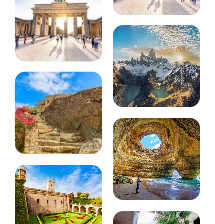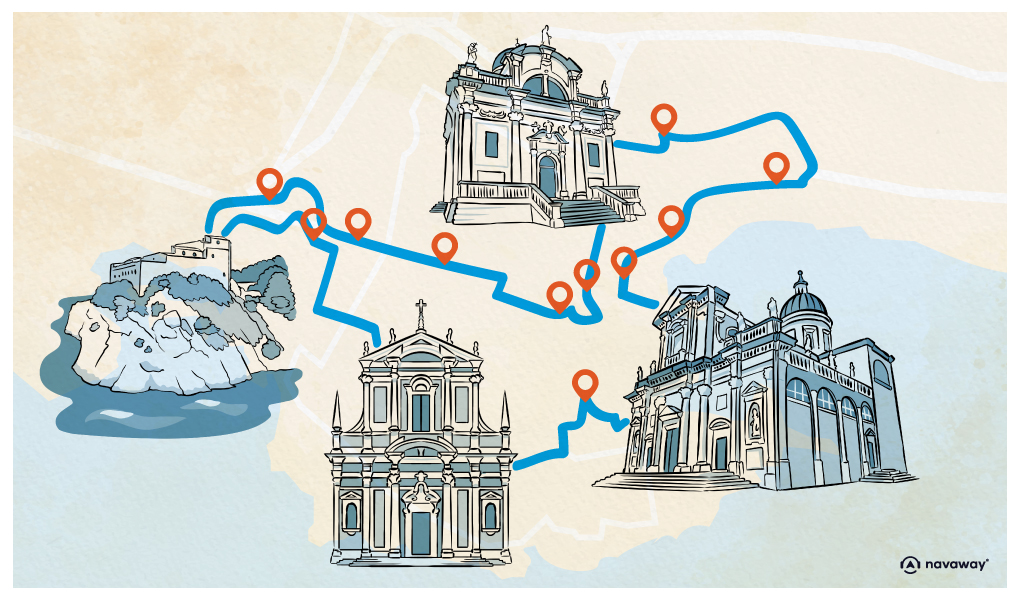
Visiting Croatia: 10 must-sees
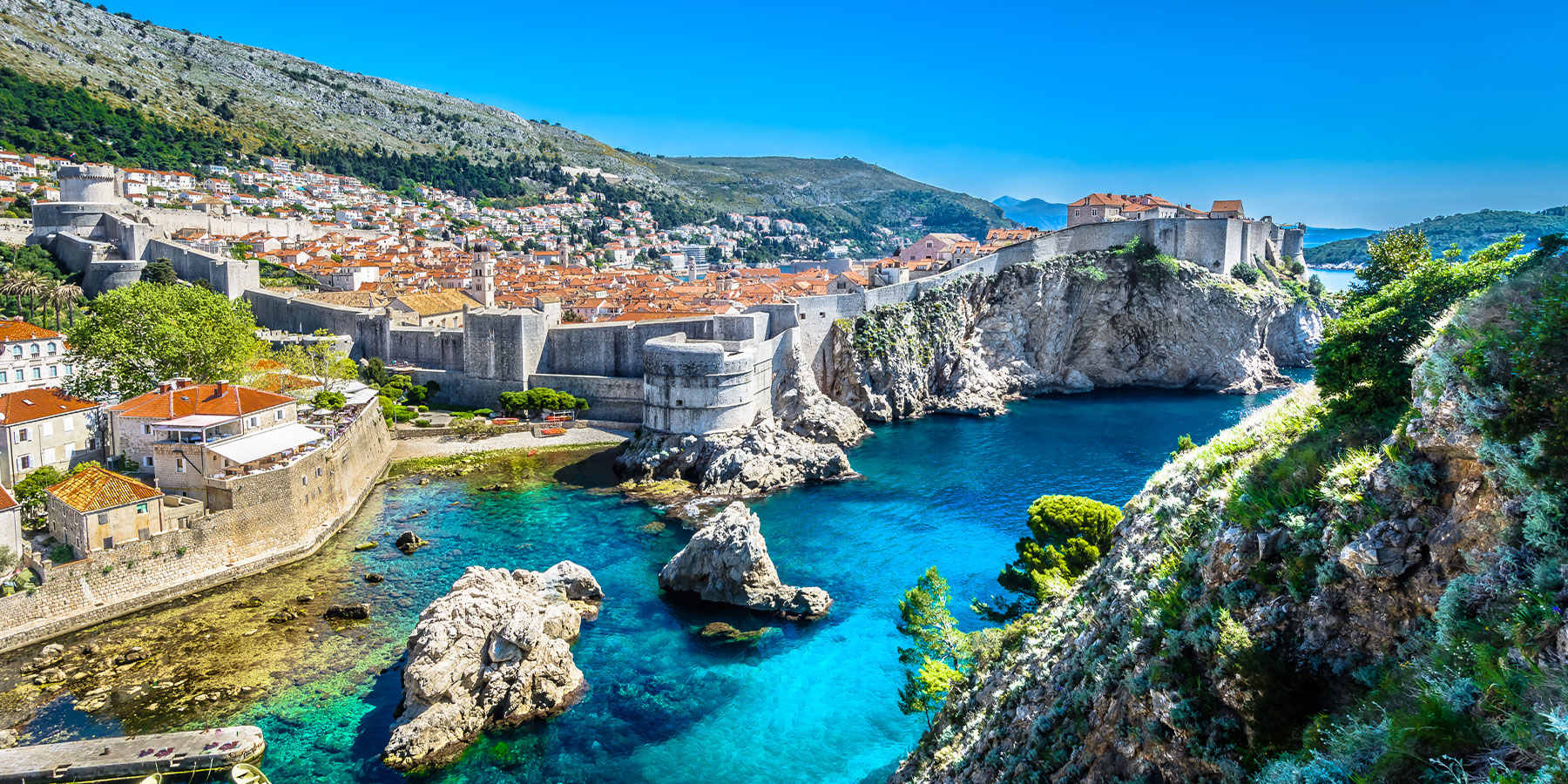
Croatia has established itself as one of Southern Europe’s leading destinations. Nestling between the Adriatic Sea and the Balkans, this Mediterranean nugget boasts an exceptional heritage that attracts travellers from all over the world. From the medieval ramparts of Dubrovnik to the turquoise waters of the Plitvice lakes, the unspoilt islands of Dalmatia and the Roman remains of Split, each region of Croatia tells a fascinating story. To visit Croatia is to plunge into a world where Venetian architecture rubs shoulders with wild nature, where pebble beaches border lush forests, and where Mediterranean gastronomy blends with Slavic traditions. Whether you’re a history buff, a nature enthusiast or in search of heavenly beaches, Croatia will charm you with its diversity and authenticity. Let’s discover the 10 must-sees that make this country such a dream destination.

Also in the Dubrovnik guide :
- The 9 most beautiful beaches in Dubrovnik
- Top 7 things to do in Dubrovnik
- Top 10 culinary specialities in Dubrovnik
- 7 islands to discover without delay on your trip to Croatia
- Top 10 must-try dishes in Croatia
- Following in the footsteps of Games of Thrones in Dubrovnik
- France’s most beautiful national and nature parks
1. Dubrovnik, the pearl of the Adriatic
Dubrovnik, known as the “Pearl of the Adriatic”, is without doubt one of Croatia’s most spectacular cities. Listed as a UNESCO World Heritage Site, this fortified city fascinates visitors with its impeccably preserved ramparts, which stretch for almost 2 kilometres around the old town. As you stroll along these medieval walls, you’ll enjoy breathtaking views of the orange-tiled roofs that contrast magnificently with the deep blue of the Adriatic Sea.
The historic heart of Dubrovnik can be discovered through the Stradun, the main thoroughfare paved with white marble polished by the centuries. This emblematic street leads to the Rectors’ Palace (Pred Dvorom 3, 20000, Dubrovnik, rated 4.6/5 on Google out of 3,500 reviews), an architectural masterpiece combining Gothic and Renaissance styles. Don’t forget to explore the Franciscan monastery with its historic pharmacy, and the Cathedral of the Assumption, whose treasury contains priceless relics.
Download the audio tour to discover Dubrovnik on foot and on your own
For a complete immersion in the history and secrets of the pearl of the Adriatic, let yourself be guided by theNavaway itinerary in Dubrovnik. This 2.5 km audio tour takes you to 18 major places of interest, from the monumental city walls to Fort Lovrijenac and the hidden streets of the old town. Each stop reveals a fascinating anecdote about this thousand-year-old city, which has managed to preserve its soul despite the torments of history.
To make the most of Dubrovnik and avoid the summer crowds, it’s best to visit in spring or autumn. The city is best discovered on foot, and you can visit Dubrovnik by following a route that will reveal all its hidden treasures, from the fortified gates to the secret squares where the atmosphere of yesteryear still reigns.
2. Split and Diocletian’s Palace
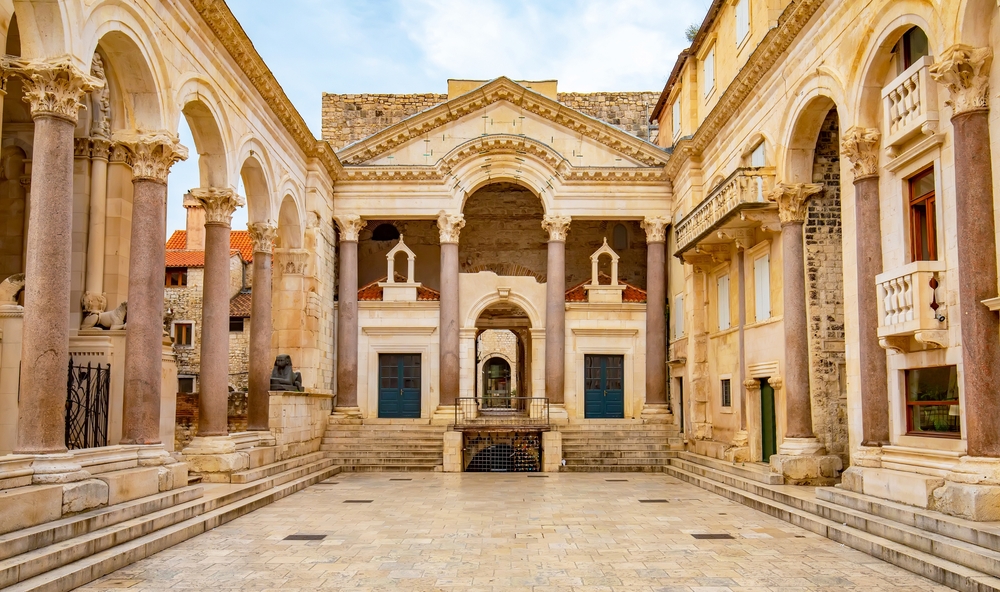
Split, Croatia’s second-largest city, is a must if you want to see the real Croatia. Its heart beats to the rhythm of Diocletian’s Palace (21000, Grad, Split, rated 4.7/5 on Google out of 25,000 reviews), one of the best-preserved Roman structures in the world. Built in the early 4th century as the Roman emperor’s retreat, this monumental palace is now a UNESCO World Heritage Site and literally houses the city’s historic centre.
The discovery of the palace begins with its fascinating, perfectly preserved underground passages, which reveal the ingenuity of Roman architecture. On the upper level, the Peristyle, the central square of the palace, impresses with its granite columns and theatrical atmosphere. Don’t miss climbing the bell tower of St Domnius Cathedral for a panoramic view of Split and the surrounding bay. The Temple of Jupiter, converted into a baptistery, bears witness to the historical continuity of the site.
Beyond the palace, Split is famous for its Riva, the palm-fringed seafront promenade where strolling is a real pleasure. The colourful and lively Pazar market offers an authentic insight into local life. A few kilometres from Split, the fortress of Klis (Trg Mejdan 10, 21231, Klis, rated 4.5/5 on Google out of 8,200 reviews) dominates the region and offers spectacular views of the entire Dalmatian coast. This medieval fortress became famous as the setting for the Game of Thrones series.
Split is also an excellent base for exploring the islands of Central Dalmatia. Regular ferries link the city to Hvar, Brač and Vis, making it possible to enrich your discovery of Croatia with unforgettable island escapades.
3. Plitvice Lakes National Park
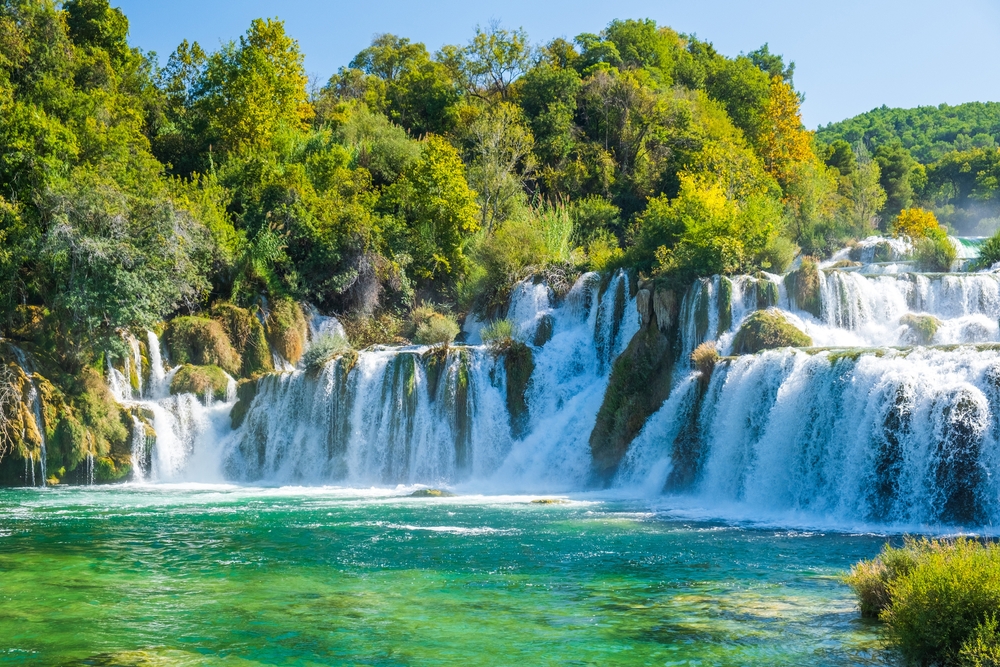
Croatia’s natural jewel, Plitvice Lakes National Park (Plitvička jezera, rated 4.8/5 on Google out of 45,000 reviews) is one of Europe’s most extraordinary sites. Listed as a UNESCO World Heritage Site since 1979, the park covers almost 300km² and is home to a unique collection of 16 cascading lakes linked by 92 spectacular waterfalls.
The magic of Plitvice lies in its ever-changing shades of water, varying from brilliant turquoise to emerald green depending on the amount of sunshine and the concentration of minerals. The lakes are divided into two groups: the upper lakes, nestling in a dolomitic valley surrounded by thick forests, and the lower lakes, carved out of a limestone canyon with dizzying walls. The route takes you along wooden footbridges that wind above and around the crystal-clear waters, offering unique views of the waterfalls.
To visit Croatia and discover this exceptional park, plan a full day. There are a number of signposted trails, ranging from 3 to 8 hours’ walk, so you can explore the site to your heart’s content. Shuttles by electric boat and panoramic bus link the different areas of the park, making it easy to get around while preserving the environment. The local wildlife, including brown bears, wolves, lynx and deer, can sometimes be seen in the early hours of the morning.
The park is accessible all year round, but each season offers a different experience. Spring sees the waterfalls swell with meltwater, summer dresses the forests in lush green, autumn adorns the trees in flamboyant colours, and winter transforms the falls into magical ice sculptures. Located halfway between Zagreb and Zadar, Plitvice is a natural stop-off point on a road trip visiting Croatia from north to south.
4. Zagreb, the cultural capital
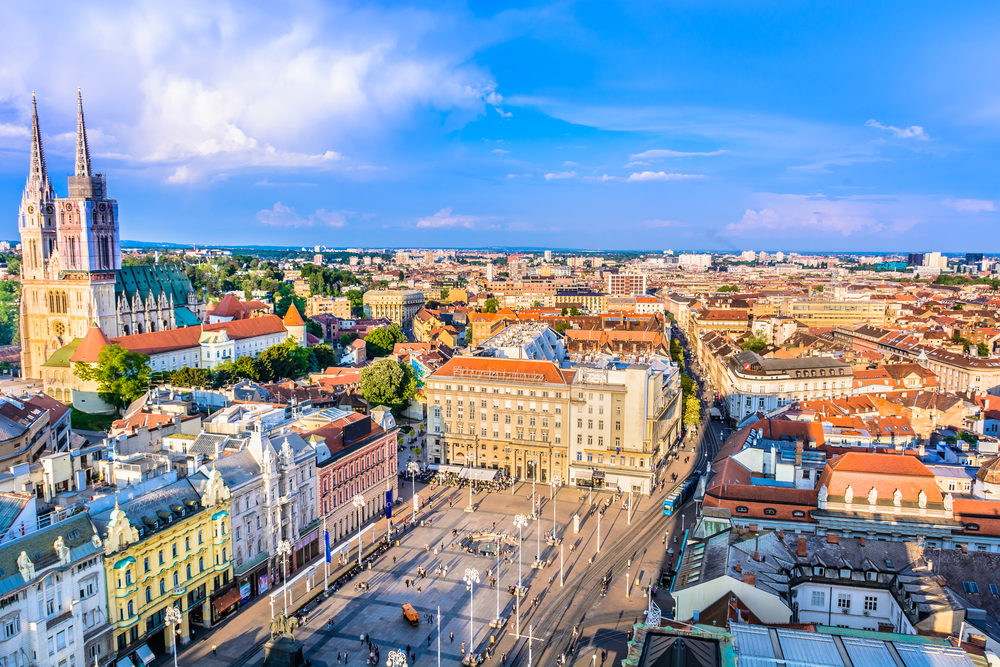
Often overlooked in favour of coastal destinations, Zagreb is well worth a visit if you want to see Croatia from a different angle. The Croatian capital elegantly combines Austro-Hungarian heritage, modern architecture and a vibrant cultural life. The city is divided into two distinct parts: Gornji Grad (Upper Town) and Donji Grad (Lower Town), each with its own character.
The upper town, the medieval heart of Zagreb, is best explored by strolling through its cobbled streets. Saint Mark’s Square, dominated by Saint Mark’s Church (Trg Sv. Marka 5, 10000, Zagreb, rated 4.6/5 on Google for 6,800 reviews) and its colourful roof bearing the Croatian coat of arms, is the highlight of this historic stroll. Nearby, the neo-Gothic spires of Zagreb Cathedral reach skywards, while the Lotrščak Tower offers a traditional cannon shot every day at midday and an exceptional view of the city.
The lower town has elegant parks, fascinating museums and Art Nouveau cafés. The “green horseshoe” of Lenuci, a succession of squares and parks designed in the 19th century, invites you to take a bucolic stroll through the city centre. Zagreb is also famous for its original museums: the Museum of Broken Relationships exhibits objects testifying to the break-up of relationships from all over the world, while the Museum of Croatian Naive Art celebrates a unique artistic movement.
The Dolac market, with its characteristic red umbrellas, brings the city centre to life every morning, offering a chance to discover local produce in a friendly atmosphere. Zagreb is also an excellent base for exploring Croatia in depth, with visits to the castles of Zagorje and the surrounding vineyards. Zagreb’s nightlife, concentrated in the Tkalčićeva district, rivals the great European capitals in terms of entertainment and diversity.
5. The Adriatic islands
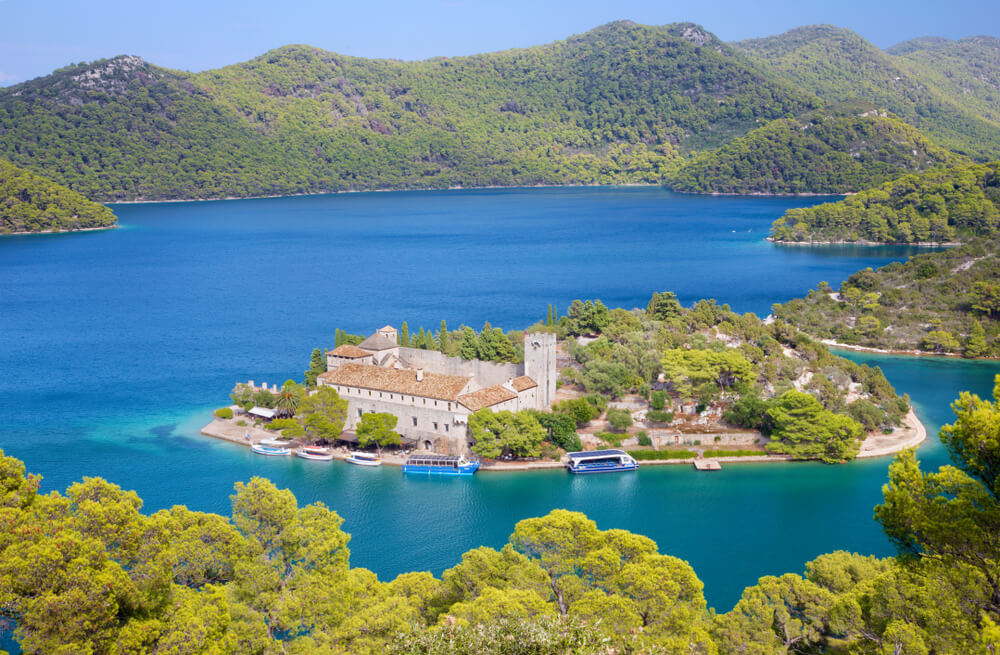
With over 1,000 islands and islets dotting the Adriatic Sea, visiting Croatia without exploring its archipelago would be missing out on an essential experience. These Mediterranean pearls each offer their own unique personality, from heavenly beaches and unspoilt fishing villages to renowned vineyards and wild nature.
Hvar, Croatia’s Saint-Tropez
The island of Hvar (rated 4.7/5 on Google out of 12,000 reviews) shines as one of the most popular destinations on the Adriatic. Bathed in sunshine almost 300 days a year, it combines Venetian history, fragrant lavender fields and lively nightlife. The town of Hvar, with its Renaissance square surrounded by palaces and its Spanish fortress perched on a hill, boasts an exceptional heritage. The secluded coves of the south coast and authentic villages such as Stari Grad, one of the oldest Greek colonies in Europe, complete the enchanting picture.
Brač and its emblematic beach
The island of Brač (rated 4.6/5 on Google for 8,500 reviews) is notable for the famous beach of Zlatni Rat (Golden Horn), a tongue of white pebbles that juts out into the sea and changes shape at the whim of the winds and currents. Beyond this world-famous site, Brač offers spectacular mountain scenery with Mount Vidova Gora, the highest peak in the Adriatic, as well as white stone quarries that provided the marble for Diocletian’s palace and the White House in Washington.
Korčula, the island of Marco Polo
Korčula (rated 4.7/5 on Google for 9,200 reviews) captivates visitors with its medieval fortified town, considered to be Marco Polo’s birthplace. Its historic centre, laid out in a fishbone shape to optimise air circulation, boasts remarkably well-preserved Venetian architecture. The island is also renowned for its vineyards, which produce exceptional white wines such as Grk and Pošip, and for traditional dances such as the Moreška.
Mljet, the Garden of Eden
The island of Mljet (rated 4.8/5 on Google for 5,400 reviews) has a lush natural setting and a national park occupying the western third of the island. Two interconnected salt lakes, Veliko and Malo Jezero, form the heart of this unique park. On an island in the middle of the Great Lake stands a 12th-century Benedictine monastery, accessible by boat, creating a setting worthy of a fairytale. According to legend, Ulysses spent seven years on Mljet, charmed by the nymph Calypso.
To visit Croatia and its islands, plan ferry trips from Split, Dubrovnik or Zadar. In summer, book your crossings in advance, as the ferry routes are very busy. Each island deserves at least a full day, and some, such as Hvar and Korčula, more than justify several days’ exploration.
6. Zadar and its art installations
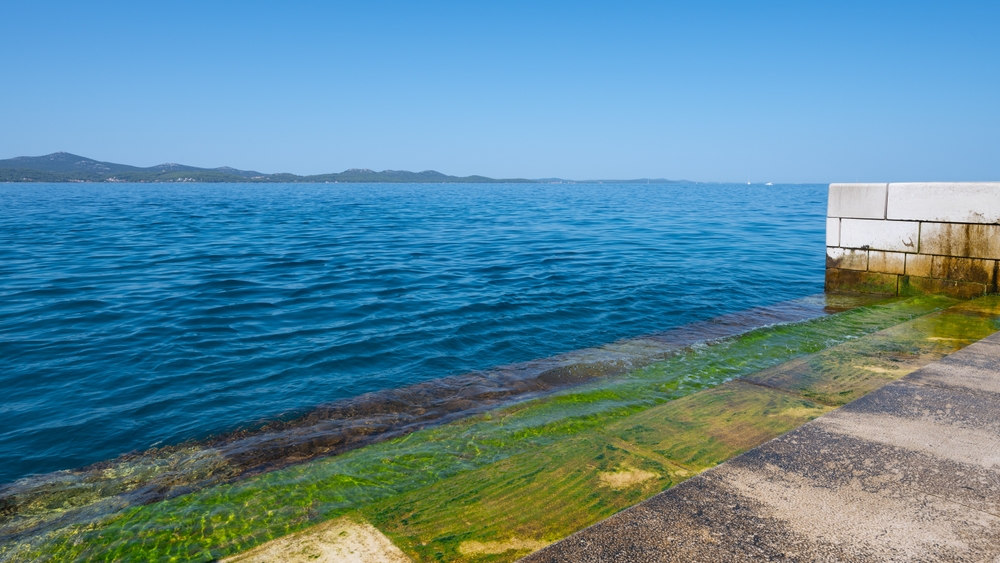
Zadar stands out from other Dalmatian cities with its unique blend of Roman remains, medieval churches and innovative contemporary art installations. To visit Croatia without discovering this city with 3,000 years of history would be to miss out on an authentic and fascinating experience.
The historic heart of Zadar, situated on a peninsula, boasts an exceptional heritage. The Roman forum, with its Column of Shame still standing, bears witness to the importance of the ancient city. The church of St. Donatus (Ul. Edmunda Husserl-a 1, 23000, Zadar, rated 4.5/5 on Google out of 4,200 reviews), a pre-Romanesque circular building dating from the 9th century, impresses with its massive architecture and remarkable acoustics, which have made it a popular concert venue.
But what makes Zadar truly unique are its two contemporary art installations by Nikola Bašić. The marine organ (Obala kralja Petra Krešimira IV, 23000, Zadar, rated 4.7/5 on Google out of 15,000 reviews), inaugurated in 2005, transforms the movement of the waves into a haunting, random melody. Thirty-five tubes installed under the stone steps of the seafront create harmonious sounds to the rhythm of the sea, offering a unique sensory experience, particularly magical at sunset.
Right next door, the Sun Salutation (Pozdrav Suncu) completes this exceptional artistic duo. This 22-metre diameter disc, made of 300 multi-layered glass panels, captures the sun’s energy during the day and is transformed into a magical light show at nightfall. The play of light, synchronised with the sounds of the marine organ, creates an almost mystical atmosphere that has earned Zadar a reputation for some of the most beautiful sunsets in the world.
Zadar is also an excellent base for exploring the surrounding area: the Paklenica National Park for hikers and climbers, the Kornati archipelago for sailing enthusiasts, and the Krka River waterfalls, an hour’s drive to the south.
7. Krka National Park

Often compared to Plitvice Lakes, but more accessible and less frequented, Krka National Park (Nacionalni park Krka, rated 4.7/5 on Google out of 28,000 reviews) offers a spectacular alternative for nature lovers wishing to visit Croatia. Created in 1985, this park protects 109 km² along the Krka river, famous for its seven impressive waterfalls.
The highlight is the Skradinski Buk waterfall, 46 metres high and made up of 17 successive falls. A network of paths and wooden footbridges allow you to explore the different levels of this natural wonder, offering spectacular views of the water as it cascades down, forming natural pools of brilliant turquoise. Unlike Plitvice, swimming was once permitted in certain areas of the park, although this practice is now regulated to preserve the ecosystem.
The park is also home to the islet of Visovac, occupied by a Franciscan monastery founded in the 15th century. Accessible by boat, this peaceful sanctuary houses a rich collection of ancient manuscripts and liturgical objects. Further upstream, the Roški Slap waterfall spreads its sheets of water 650 metres wide, creating an enchanting landscape dotted with restored traditional watermills.
If you want to visit Croatia and discover Krka, there are several entrances to the park from different points. The main entrance at Skradin offers a short boat trip on the river before reaching the waterfalls. The entrance at Lozovac, situated at a higher level, provides direct access to the site by road or via a panoramic staircase. The park is best visited between April and October, and takes only half a day to explore, although you can easily spend a whole day there.
Situated between Split and Zadar, Krka fits perfectly into a coastal itinerary. The nearby town of Šibenik, with its UNESCO-listed cathedral of St James, is also well worth a visit during your stay in the region.
8. Pula and Roman Istria
The Istrian peninsula in north-west Croatia offers a different face to the country. Marked by Venetian and Austro-Hungarian influences, this region reveals a unique culinary identity and a remarkable architectural heritage. Pula, its main city, is the ideal gateway for visiting Istrian Croatia.
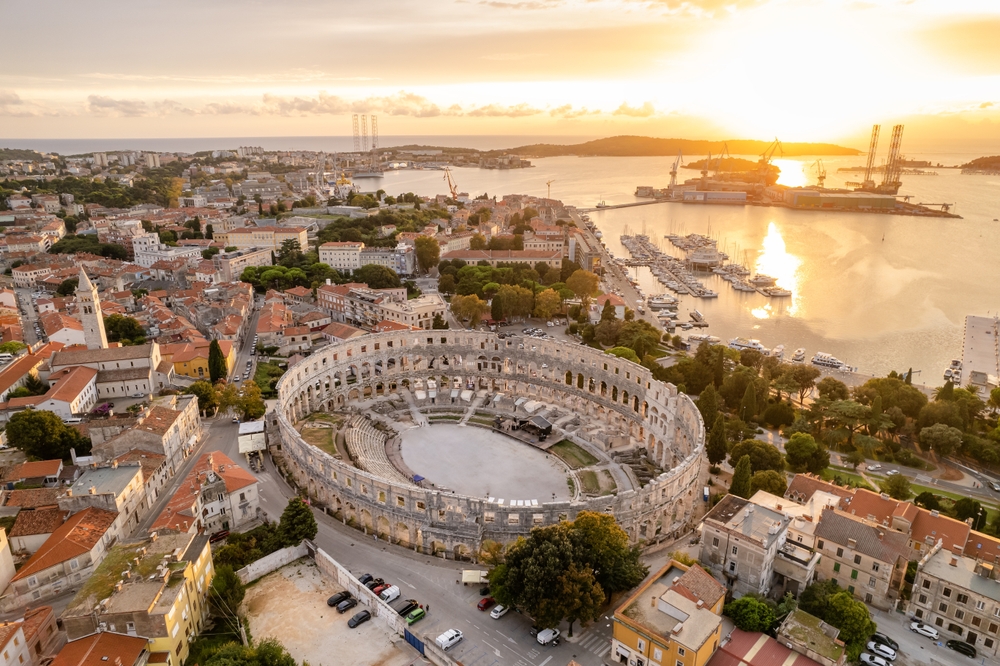
The Pula amphitheatre (Flavijevska ul., 52100, Pula, rated 4.6/5 on Google out of 22,000 reviews) dominates the city centre with its imposing silhouette. Built in the 1st century under Emperor Vespasian, this Roman arena is one of the six largest and best preserved in the world. Measuring 132 metres in length, it could accommodate up to 20,000 spectators. Today, the building hosts concerts and festivals, perpetuating its vocation as a performance venue. The underground galleries house a fascinating exhibition on ancient viticulture and olive growing in Istria.
As well as its amphitheatre, Pula has other remarkable Roman remains: the Arch of the Sergii, a richly sculpted triumphal gateway, and the Temple of Augustus, which has stood on the forum for 2,000 years. The historic centre combines medieval alleyways, Austro-Hungarian architecture and lively squares, where the flavour of Istrian gastronomy, renowned for its truffles, olive oil and wines, wafts through the air.
Romantic Rovinj
40 kilometres north of Pula, Rovinj (rated 4.7/5 on Google out of 18,000 reviews) enchants visitors with its unspoilt Venetian charm. A former island connected to the mainland in the 18th century, the old town stands on a rocky peninsula, crowned by the baroque bell tower of the Basilica of Saint Euphemia. Colourful houses with green shutters line the steep streets leading down to the fishing port, creating a picture-postcard setting.
The seafront promenade is an inviting place to stroll, punctuated by rocky coves for swimming. Artists’ studios dot the old quarter, testifying to Rovinj’s appeal to the creative community. For an in-depth visit to Istrian Croatia, Rovinj is a must, combining culture, gastronomy and seaside relaxation.
The hilltop villages of Istria
The Istrian hinterland hides some little-known treasures: medieval villages perched on hills, surrounded by vineyards and forests of truffle oaks. Motovun (rated 4.6/5 on Google out of 5,800 reviews), with its intact ramparts and cobbled streets, offers an extraordinary panorama of the Mirna valley. Every summer, the village hosts a renowned film festival. Grožnjan, an artists’ village par excellence, vibrates to the sound of painting workshops and classical music concerts in its galleries and squares.
Istrian gastronomy can be savoured in these authentic villages: white and black truffles, sheep’s milk cheese, home-made charcuterie, Malvazija and Teran wines… Istria cultivates a Mediterranean art of living that magnificently enriches the experience of anyone wishing to visit Croatia in all its diversity.
9. Mountain national parks
Visiting Croatia isn’t just about coastal wonders and lakes. The country also boasts spectacular mountain parks that will delight hikers and adventure-seekers alike. These unspoilt areas offer stunning Alpine scenery, just a few dozen kilometres from the sea.
Paklenica National Park
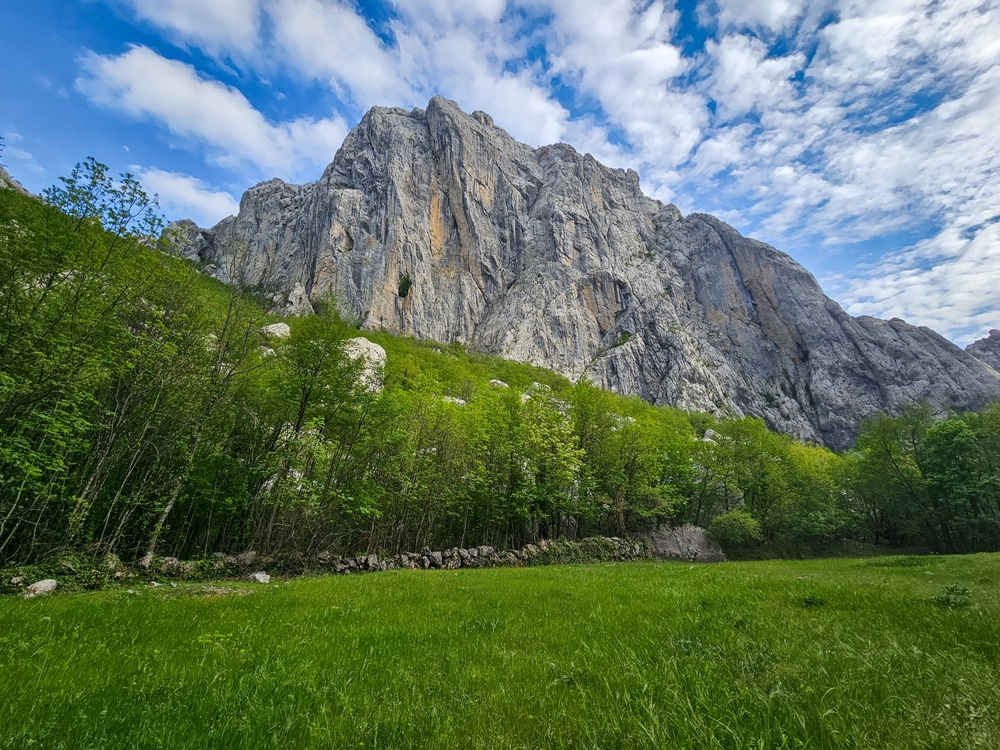
Paklenica National Park (Nacionalni park Paklenica, rated 4.7/5 on Google for 3,800 reviews), located in the Velebit massif north of Zadar, is a paradise for climbers and hikers. Two spectacular canyons, Velika and Mala Paklenica, cut deep into the mountain, creating vertiginous limestone walls that are prized by climbers from all over the world. More than 400 equipped climbing routes attract enthusiasts, while hiking trails provide access to peaks offering breathtaking views of the Adriatic islands.
The park is home to remarkable biodiversity, with species endemic to the Dinaric region. The caves dotted around the massif add a caving dimension to the exploration. In winter, the contrast between the snow-capped peaks and the nearby sea creates a striking landscape.
Kornati National Park
At the opposite end of the natural spectrum, the Kornati National Park (Nacionalni park Kornati, rated 4.8/5 on Google for 2,100 reviews) boasts a unique seascape. This archipelago of 89 arid islands and islets, sculpted by wind and sea, forms a mineral labyrinth of austere beauty. George Bernard Shaw said that “on the last day of Creation, God wished to crown his work and so, from tears, stars and breath, he created the Kornati”.
This essentially maritime park can be discovered by boat from Zadar or the island of Murter. The crystal-clear waters invite you to dive and snorkel, revealing exceptional seabeds. The sheer cliffs of Dugi Otok, the Long Island, plunge dramatically into the sea, creating breathtaking panoramas. A few isolated konobe (tavernas) on the islands allow you to enjoy grilled fish in an unforgettable wilderness setting.
These national parks bear witness to the geological and ecological diversity that characterises Croatia. A visit to Croatia that includes these natural areas allows you to embrace all the richness of a country where sea and mountains exist side by side in harmony.
10. The Blue Grotto in Biševo
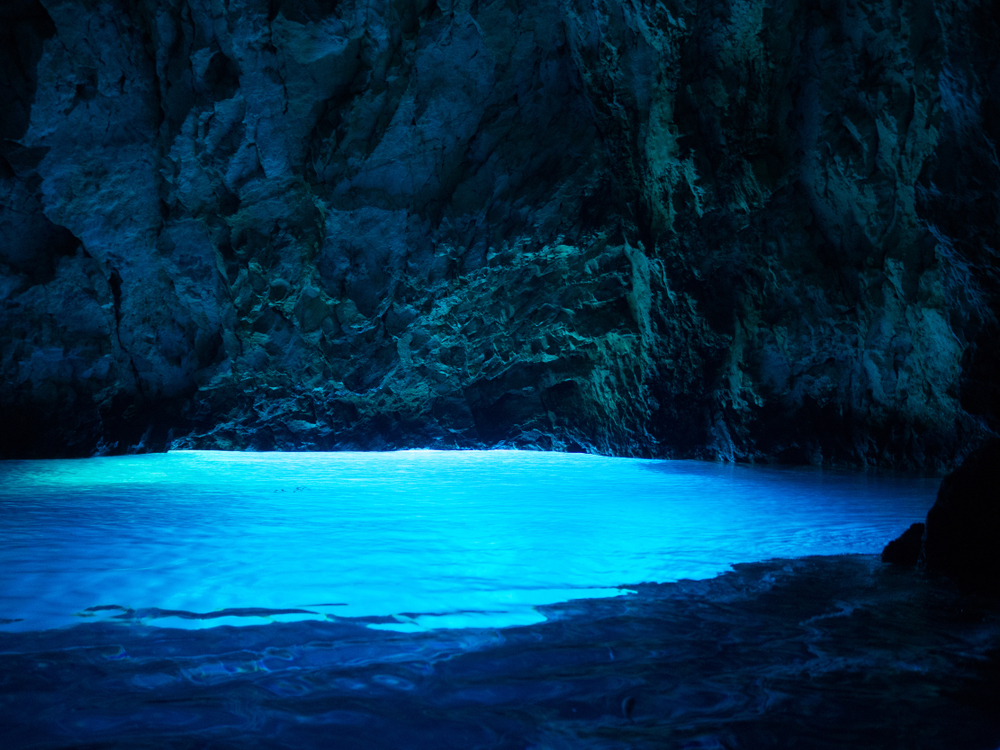
Among the natural wonders of the Adriatic, the Blue Grotto (X2JC+3R, 21485, Biševo, rated 4.6/5 on Google for 3,200 reviews) occupies a special place. This unique light phenomenon transforms this marine cavity on the island of Biševo into a sanctuary of silvery-blue light of unreal beauty.
The secret of this magic lies in an underwater opening through which the sun’s rays penetrate. The light passes through the seawater, reflects off the white limestone floor of the cave and then rises to the surface, creating an electric blue glow that bathes the entire cavern. The effect reaches its peak between 11am and 1pm on a sunny day, when the sun is at the perfect angle to illuminate the cave.
To visit Croatia and discover this hidden gem, you need to go to the island of Vis, a 2? hour ferry ride from Split. From here, organised boat trips take you to Biševo and its blue cave. The cave is entered in small boats that can navigate through the narrow opening. Inside, silence mingles with the lapping of the water, and the supernatural blue light creates an almost mystical atmosphere that leaves visitors speechless.
An excursion to the Blue Grotto is usually accompanied by a visit to other remarkable sites around Vis: the beach at Stiniva, ranked among the most beautiful in Europe, with its narrow cove set between vertical cliffs, the green grotto at Ravnik, and various secluded coves perfect for swimming in crystal-clear waters.
Vis itself is well worth a visit. Long closed to tourists because of its military importance, the island has preserved a rare authenticity. The town of Vis, with its Greek and Roman remains, and Komiža, a traditional fishing village, offer a glimpse of the Croatia of yesteryear. The island’s vineyards produce excellent wines, notably the white Vugava, and the local cuisine celebrates the products of the sea and land with simplicity and generosity.
In conclusion, a visit to Croatia is a journey through centuries of history, stunningly diverse landscapes and authentic Mediterranean culture. From the ramparts of Dubrovnik to the turquoise waters of Plitvice, from the sun-drenched islands to the medieval villages of Istria, each region reveals its own treasures. To fully discover these wonders, particularly the pearl of the Adriatic, don’t hesitate to follow the Navaway audio tour of Dubrovnik, which will reveal all the secrets of this emblematic city. Whether you’re a history buff, a nature enthusiast or just looking to relax on heavenly beaches, Croatia is sure to meet all your expectations and leave you with lasting memories of this land where the Adriatic meets the Balkans in perfect harmony.
FAQ : Visiting Croatia
When is the best time to visit Croatia?
The best time to visit Croatia is from May to June and from September to October. These months offer a pleasant climate, ideal temperatures (20-25°C) and moderate tourist numbers. Summer (July-August) is hotter and very busy, especially on the coast and in popular locations such as Dubrovnik and Hvar. Spring is the perfect time to discover the national parks in bloom, while autumn is when the sea is still warm and prices are cheaper.
How many days does it take to visit Croatia?
To visit Croatia properly, allow at least 7 to 10 days. This will allow you to discover the must-sees: Dubrovnik (2 days), Split and Diocletian’s Palace (1-2 days), one or two islands such as Hvar or Korčula (2-3 days), and Plitvice national park (1 day). For a more complete trip including Zagreb, Istria and other national parks, allow 14 days or more. Croatia lends itself perfectly to road trips along the Adriatic coast.
How do you get around Croatia?
Car hire remains the most practical way of visiting Croatia with complete freedom, particularly for exploring the national parks and the hinterland. The modern motorway runs along the coast from Zagreb to Dubrovnik. There are regular, reliable ferries to the islands from Split, Zadar and Dubrovnik. Intercity buses serve all the major cities and offer an economical alternative. Inside cities such as Dubrovnik and Split, everything can be done on foot. Some islands are car-free in high season.
Do I need a visa to visit Croatia?
Citizens of the European Union, Switzerland and many other countries (including Canada) do not need a visa to visit Croatia for tourist stays of less than 90 days. A valid identity card or passport is sufficient for EU nationals. Since January 2023, Croatia has been part of the Schengen area and has adopted the euro as its official currency, making travel in the country considerably easier.
What are the culinary specialities to try in Croatia?
Croatian cuisine varies from region to region. On the Dalmatian coast, don’t miss the freshly caught grilled fish, seafood, black risotto with squid ink and peka (meat and vegetables cooked under a metal bell). In Dubrovnik, try the Ston oysters. Istria is renowned for its truffles, olive oil and wines. Inland, discover ćevapi (small grilled sausages), pršut (cured ham), and local cheeses. Desserts include fritule (fritters) and rožata, the Croatian version of crème caramel.
200 audioguided tours for cities all around the world
Download